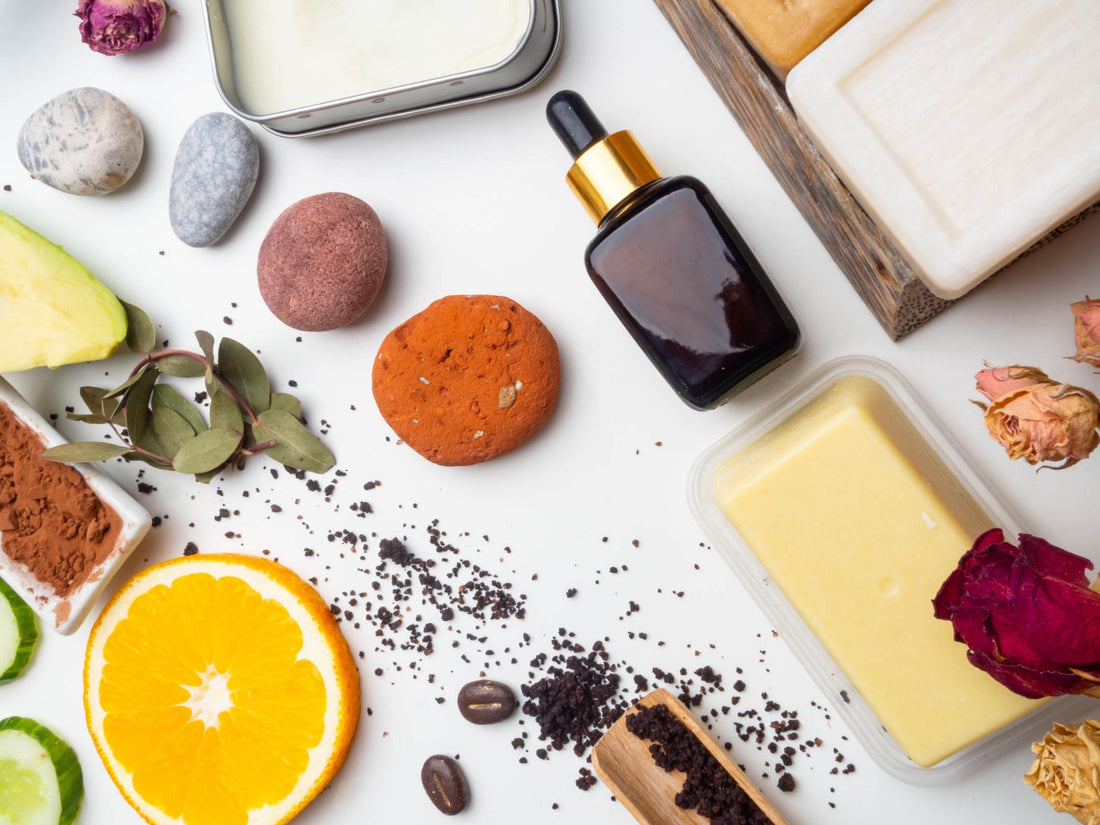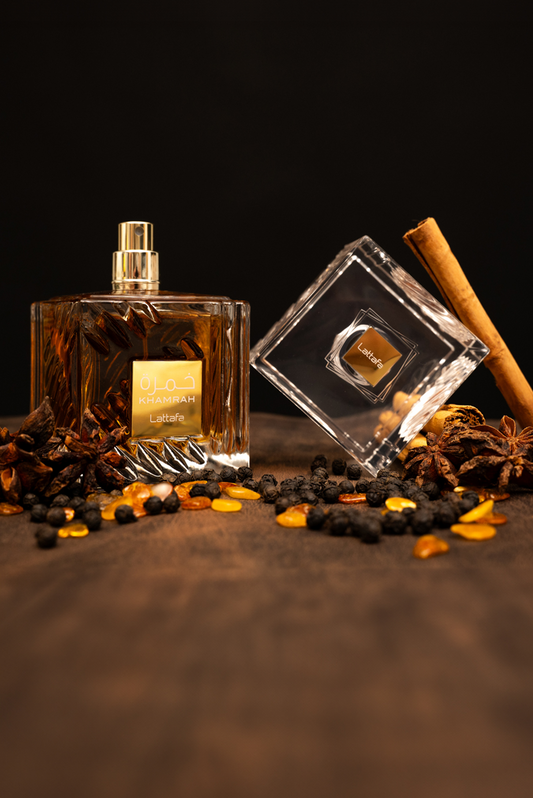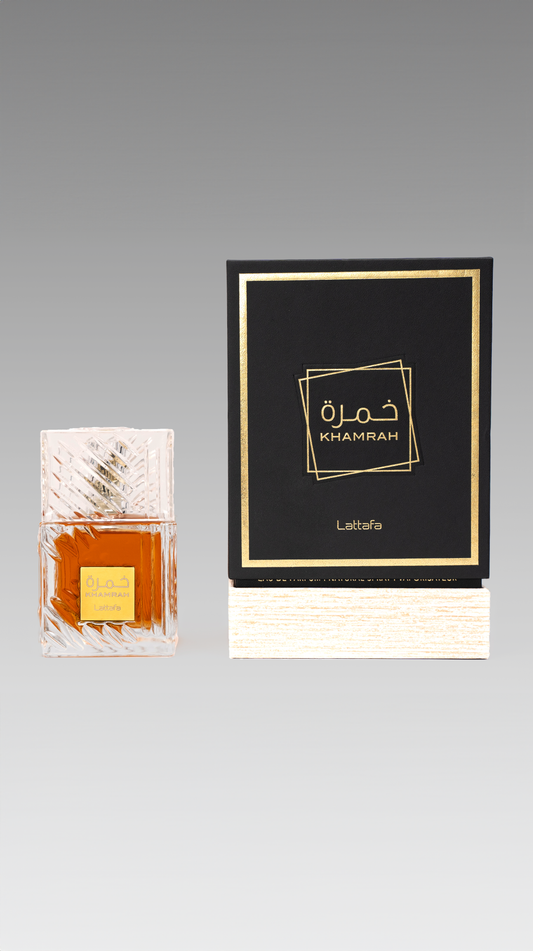
Rare and exotic ingredients in perfumery: Focus on little-known olfactory treasures
Share
Exotic and rare perfumes captivate the senses and arouse curiosity. They have a special charm, resulting from the use of precious and hard-to-find ingredients. These rare ingredients bring a unique touch to olfactory compositions, enriching fragrances with new nuances. This article explores some of these little-known olfactory treasures, highlighting their origin, characteristics and use in perfumery.
1. Oud (Agarwood)
Oud, also known as agarwood, is one of the most prized and expensive ingredients in perfumery. Its rarity and complexity make it an exceptional olfactory treasure.
Origin: Oud comes from the aquilaria tree, a tree that grows primarily in Southeast Asia, including India, Cambodia, and Indonesia. When this tree is infected with a certain type of mold, it produces a dark, aromatic resin to defend itself. This resin is harvested and transformed into oud, a long and meticulous process.
Olfactory characteristics : Oud notes are intense and deep, offering a woody, smoky, resinous and slightly sweet scent. Its olfactory complexity is unmatched, with layers of nuances that evolve over time.
Use in perfumery : Highly prized in oriental and woody perfumes, oud is used for its depth and richness. It brings a touch of mystery and sophistication, transforming a simple fragrance into a true work of olfactory art.
Fragrance example : Oud Wood by Tom Ford is a perfect example of how oud can be integrated into a modern and luxurious composition, offering an enveloping and long-lasting olfactory experience.
2. Ambergris
Ambergris is another rare ingredient that has fascinated perfumers for centuries. Its rarity and unique properties make it a valuable element in the creation of luxury perfumes.
Origin : Ambergris is a substance produced by sperm whales. After being secreted, this substance floats on the ocean for years, slowly transforming in contact with salt water and sunlight. It is then harvested when it washes up on beaches or is found floating on the surface of the water.
Olfactory characteristics : Its notes are marine, sweet and animal, bringing a sensual and mystical dimension to perfumes. Ambergris is known for its ability to fix other aromas, allowing them to last longer on the skin.
Use in perfumery : Used as a natural fixative, ambergris brings a unique longevity and complexity to fragrances. Its ability to harmonize the different notes of a perfume makes it indispensable in sophisticated compositions.
Sample fragrance : Byredo's Bal d'Afrique incorporates ambergris to add an exotic and lingering touch, enveloping the wearer in an aura of mystery and elegance.
3. Saffron
Saffron, often referred to as “red gold,” is a precious spice and a key ingredient in some of the most luxurious perfume compositions.
Origin : Harvested from the stigmas of the crocus flower, saffron is mainly cultivated in Iran, India and Spain. Harvesting this spice is a laborious and delicate process, requiring a lot of manpower, which contributes to its high price.
Olfactory characteristics : Saffron offers spicy, earthy and slightly metallic notes, creating a captivating contrast in perfume compositions. Its warmth and depth make it a particularly appreciated ingredient in oriental and spicy perfumes.
Use in perfumery : It adds an exotic and luxurious touch to perfumes, enhancing the other notes and bringing a sophisticated and intriguing dimension.
Sample Fragrance : Baccarat Rouge 540 by Maison Francis Kurkdjian uses saffron for its warmth and depth, creating a rich, seductive composition that envelops the senses.
4. Mysore Sandalwood
Mysore Sandalwood is famous for its superior quality and distinctive aroma. It is a mainstay of oriental and woody perfumery.
Origin : This precious wood comes from the Mysore region of India, known for producing the best sandalwood in the world. Sandalwood trees are cultivated there for decades before their wood is harvested, making it a precious and limited resource.
Olfactory characteristics : Its notes are creamy, woody and milky, bringing a comforting sweetness and natural sophistication. Sandalwood is appreciated for its ability to harmonize with a wide variety of other notes.
Use in perfumery : Appreciated for its softness and its fixing power, sandalwood is an ideal base for many perfume creations, adding a depth and longevity appreciated by perfume lovers.
Sample fragrance : Santal 33 by Le Labo highlights the creamy richness of sandalwood, combined with notes of leather and cardamom, creating a modern and timeless composition.
5. Tahitian vanilla
Tahitian vanilla is renowned for its unique aromatic richness, different from the more common bourbon vanilla.
Origin : Tahitian vanilla is grown mainly in French Polynesia. It is distinguished by its floral and fruity aroma, resulting from the climatic conditions and cultivation techniques specific to this region.
Olfactory characteristics : The notes of this vanilla are sweet, creamy and floral, offering a gourmand sensuality to perfumes. Its complex aromatic richness makes it an ingredient of choice for sophisticated compositions.
Use in perfumery : Used in gourmet and oriental perfumes, it enriches the compositions with its suave and delicate complexity, adding a luxurious and exotic touch.
Sample Fragrance : Atelier Cologne's Vanille Insensée uses Tahitian vanilla for its sweetness and richness, creating an enveloping and seductive fragrance.
6. Champaca
The champaca flower is a source of beauty and intense fragrance, often used in opulent floral arrangements.
Origin : Champaca flower comes from the Michelia champaca tree, which is grown in India and Southeast Asia. This exotic flower is prized for its intoxicating fragrance and traditional medicinal properties.
Olfactory characteristics : Its notes are floral, fruity and slightly spicy, bringing an exotic opulence to perfume compositions. Champaca is known for its rich and voluptuous aroma, which adds a luxuriant dimension to perfumes.
Use in Perfumery : Champaca adds an exotic and lush touch, often used in floral and oriental perfumes for its ability to enrich and enhance other floral notes.
Sample fragrance : Tom Ford's Champaca Absolute is a tribute to this precious flower, offering a rich and complex floral composition that transports the wearer to lush and exotic gardens.
Finally... there is so much left
Rare and exotic ingredients play a crucial role in creating distinctive and memorable fragrances. Their richness and complexity bring a unique dimension to the compositions, making each fragrance an exceptional sensory experience. Exploring these little-known olfactory treasures means opening yourself up to a world of new and fascinating scents.









